International experience in innovating production relations in the digital age
International experience shows that the adjustment of production relations cannot come after the production forces, but must be proactive, go ahead, play a leading and orienting role. Below are some experiences of some countries, which can provide important suggestions in the process of perfecting production relations in the digital era.
China: The state guides the digital economy and controls production relations operating on digital platforms.
Since 2019, China has been the first country to officially recognize data as a strategic production factor, on par with land, labor, capital and technology. This is considered an important theoretical turning point, shaping the approach to digital economic development under the model of proactive state leadership. This spirit is institutionalized through a series of national strategies, such as “internet plus”, “made in China 2025” and “China Digital Planning 2035”.
The data institutional system is also being built in line with the promulgation of the 2021 Data Privacy Law, the Personal Data Protection Law, and the development of national data centers. The goal is not only to protect citizens' privacy, but also to control and manage data assets as national strategic resources. For large digital platform corporations, such as Alibaba, Tencent or Didi, the Chinese government has implemented strong regulatory measures, forcing these businesses to adjust their value distribution models towards a more equitable direction, within the framework of the "common prosperity" program to limit inequality in the digital economy.
An employee works at a semiconductor production line in Zhejiang province, China_Source: CHINA DAILY
Another notable point is the official inclusion of digital platform labor relations into the scope of legal regulation. The Supreme People's Court of China has issued a precedent requiring digital platform enterprises to ensure minimum wages, limit reasonable working hours, and provide social insurance for technology drivers. This shows that China is one of the leading countries in recognizing new subjects in production relations and establishing a labor protection framework suitable for the practical operation of digital platforms.
Lessons learned from China are to proactively build a timely legal framework to determine ownership and data governance mechanisms; clearly define the obligations and social responsibilities of platform enterprises; and expand the scope of labor law regulation to cover non-traditional forms of employment in the digital economy.
South Korea: Developing digital platforms with flexible labor protection
Through the Digital New Deal Strategy (2020 - 2025), the Korean government has established a direction for developing public data systems as a strategic infrastructure to promote private sector innovation. Opening access to national databases and ensuring fair access mechanisms have laid the foundation for the strong development of the digital startup community and data-driven innovative services.
Another highlight is the legal recognition of platform workers, including groups such as delivery workers, content creators, and technology service drivers. The state has mandated social insurance and implemented other forms of social security protection for this workforce. In parallel, South Korea has built a “public digital job exchange” - a state-run platform to coordinate the supply and demand of digital labor, monitor working conditions, ensure occupational safety, and make the job allocation process transparent.
The lesson from Korea is to develop a flexible insurance ecosystem that can cover informal workers, while building a digital job database to connect and protect workers in a digital environment.
Estonia: Digital State and Transparency of Production Relations through Data
Estonia is a prime example of a comprehensive digital state, where most production relations, from ownership, labor to transactions, are digitized and operated on an open data platform. The central digital infrastructure, called “X-Road”, allows public and private databases to connect and communicate with each other through a single electronic identification system, thereby minimizing transaction costs and eliminating most administrative intermediaries.
What is unique about Estonia’s Digital State model is that the Government not only promotes digitalization, but also places a strong emphasis on citizens’ control over their data. Individuals have the right to know who has accessed their data, when and for what purpose; and they have the right to refuse or deny the use of data without legitimate grounds. This approach has created a form of digital production relations established on the principles of transparency, data democratization and the redistribution of information power to citizens.
The lessons learned from the Estonian model are that it is necessary to accelerate the process of building a digital government, promptly complete and implement the Data Law and the Personal Data Protection Law, and develop an interconnected data connection infrastructure. This is a core factor to ensure transparency, fairness and efficiency in coordinating production relations in the context of digital transformation.
Germany: Social consensus and tripartite coordination in digital production
Germany is a pioneer in linking digital industrial development with production relations reform according to the “Socio-Market Economy” model. Through the Industry 4.0 initiative, Germany not only focuses on investing in technology infrastructure and automation, but also innovates labor relations and social bargaining mechanisms to adapt to digital production methods. The “innovation triangle” model, including the State - Enterprises - Research Institutes, is operated as a synchronous coordination mechanism on technology, human resources and legal institutions. Within that framework, large trade unions and business associations conduct collective bargaining to restructure working regimes, social security and benefit distribution in areas such as smart manufacturing, digital logistics and data-based manufacturing. At the same time, the German government is also exploiting big data to optimize the social welfare system and coordinate retraining programs, helping the traditional workforce adapt to an increasingly automated and AI-based production environment.
The lesson learned from the German model is the need to establish a tripartite coordination mechanism (State - Enterprises - Workers) in the digital environment; linking the digital transformation strategy with social welfare reform and comprehensive retraining policies, to minimize the risk of exclusion and enhance the social inclusiveness of the digitalization process.
From the experience of previous countries shows:
First of all , production relations in the digital age cannot be adjusted passively. The State’s initiative with a leading legal institution is a prerequisite to lead, instead of following, the rapid changes of digital production forces. Policies need to have a strategic vision and the ability to adapt flexibly to new forms of ownership, organization and distribution.
Next , the traditional legal framework, set in the context of modern production relations, has not kept up with the pace of change in digital practices. The emergence of data, algorithms and digital platforms requires “new rules of the game” for the data economy, including data ownership and governance, platform business responsibilities, as well as a legal framework for non-traditional forms of labor.
Finally , the role of the State needs to be redefined as a “digital enabling State”. The State should not only play a regulatory role, but also become the subject of creating digital infrastructure, protecting vulnerable groups and ensuring fair distribution in the process of restructuring production relations.
Some policy suggestions and development orientations
Adjusting production relations is not just a technical or administrative solution, but a fundamental restructuring requirement to ensure the suitability, compatibility and ability to orient sustainable development of the economy in the digital age.
Building data institutions and establishing ownership in digital space
As data becomes the central means of production of the digital economy, the construction of a modern data institution is an urgent requirement to form a new form of production relations suitable to the characteristics of rapidly changing productive forces. However, the current legal system is still inadequate to comprehensively identify, classify and regulate data assets. To create a solid legal foundation for the data economy, it is necessary to develop specialized legal documents with high legal value on data assets, which clearly establish a system of powers in the digital field, such as ownership, usage rights and data transfer rights of subjects, associated with the development of a mechanism for granting rights, pricing and monitoring data exploitation according to the principles of transparency, fairness and responsibility. Encouraging a conditional public-private data sharing mechanism, while ensuring the security of personal data, will help improve the efficiency of exploiting data resources, while limiting the risk of data concentration in a few large technology platforms. Only when data rights are legislated and legitimately protected, can the new data-based production develop in a transparent, fair and sustainable direction.
Adjusting labor laws to suit new forms of labor
The strong development of the digital economy has given rise to new forms of labor, such as digital labor or cross-border digital labor, forms of labor activities that are different from the traditional labor relations model. Current labor regulations are mainly based on bilateral relations between employees and employers, established in the traditional way, showing some limitations and shortcomings. In reality, a large part of the work on digital platforms is flexible and has few institutional constraints.
This requires the formation of a number of regulations with a larger scope of coverage. Regulations regulating labor activities on digital platforms need to be designed in sync with a flexible social insurance mechanism, not dependent on stable labor relations. This model allows workers to participate in contributions and enjoy social security benefits according to the principle of "contribution - enjoyment" respectively and flexibly. At the same time, it is necessary to study a new form of collective bargaining suitable for the digital labor environment, in which three subjects: workers, digital platform operators and customers - participate in the mechanism of coordinating benefits and working conditions. This is a decisive step to ensure social justice, occupational safety and workforce stability in the new production structure.
Engineers of Viettel High Technology Industry Corporation research and produce 5G equipment_Source: vietnamplus.vn
Innovating distribution relations in the digital economy
In the digital economy, value is increasingly created through data, connections and digital interactions, rather than relying solely on direct labor or traditional physical capital. However, the current distribution mechanism is still mainly based on physical ownership, while most of the digital value is concentrated in the subject of data control and digital platform operation. This increases the gap in benefits between value creators (users, platform workers) and value possessors (platform owners, technology corporations). To adjust the distribution relationship in the new context, it is necessary to gradually establish a data value sharing mechanism, ensuring that data creators, including platform users and workers, enjoy a proportionate share of benefits from the data exploitation process. In addition, it is necessary to research and deploy appropriate regulatory tools, such as cross-border platform taxation, establishing a new tax base based on digital values, and encouraging business and organizational models based on collective ownership of data, such as data cooperatives or community platforms.
Shaping the role of the State
The adjustment of production relations in the digital age cannot be successful without the leading, coordinating and protecting role of the State. However, this role needs to be reshaped in the direction of shifting from the administrative management and control model to the "digital state" model. The digital state does not stop at promulgating laws and legal frameworks, but also needs to proactively invest in and develop core digital infrastructure, including open data, national data centers, electronic identification systems and network security, considering this as essential infrastructure similar to electricity, road, school and station infrastructure in the previous industrial period. At the same time, digital government must be completed in the direction of integration, real-time operation, transparency of the entire process and optimization of online public services, in order to improve efficiency and reduce social transaction costs. In addition, the State needs to play a leading role in protecting vulnerable groups in the digital environment, regulating the negative impacts of the digital market and promoting fair competition between domestic and foreign entities. The establishment of an inter-sectoral digital transformation coordination center will help improve the capacity to forecast and respond to emerging policy issues, while ensuring synchronization and consistency in adjusting digital institutions.
Innovating the education and training system to suit the digital production force
The digital manufacturing workforce cannot develop without a workforce fully equipped with digital skills, technological thinking and flexible learning capacity. However, the current education and training system is still mainly designed to meet the requirements of traditional manufacturing, so it has not really adapted to the requirements of the digital economy. In the coming period, it is necessary to comprehensively restructure the vocational education and higher education system, focusing on building a national digital skills framework, updating training programs towards technology integration, interdisciplinary learning and lifelong learning. Developing an “open education” model combined with online learning platforms and flexible certification mechanisms will create conditions for workers to upgrade their skills quickly, while supporting career transitions in the context of constantly changing technology.
In addition, it is necessary to strengthen the cooperation mechanism between schools - enterprises - research institutes and universities to ensure that training is linked to production practices, helping to form a workforce that immediately meets the requirements of businesses in the digital age. In particular, vulnerable groups, such as women, ethnic minorities, the elderly and people with disabilities, need to be given priority access to digital skills training programs, in order to minimize the risk of being excluded from the national digital transformation process.
Piloting and institutionalizing the digital production relations model
In the context of digital technology developing at a rapid pace, but the legal system cannot immediately keep up, allowing the testing of new production models in “regulated institutional testing spaces” (regulatory sandboxes) becomes an important strategy. Models such as “personal data banks”, “digital cooperatives”, intangible production zones or non-profit digital platforms can be piloted in innovation centers. These pilot programs need to be linked to a policy impact assessment mechanism, feedback from practice and a roadmap for step-by-step institutionalization when the model proves effective. The “learning by experimentation” approach helps policy become flexible and shortens the institutional gap with countries that are ahead in regulating digital production relations.
Overall, the proposed policy orientations and recommendations do not aim to adjust each part of the socio-economic system separately, but aim to build a new institutional ecosystem where digital productive forces and compatible production relations can develop harmoniously. This is the prerequisite for successfully achieving the goal of rapid, sustainable and inclusive development in the context of the Fourth Industrial Revolution that is spreading strongly and reshaping the global socio-economic structure.
In short, the process of transforming production relations in the context of developing digital production forces needs to be based on a long-term and synchronous vision. First of all, the theoretical system and strategic orientation need to clearly identify digital production forces as the central driving force of the new development stage and digital production relations as a policy space that must be actively regulated. Focused investment in data infrastructure, digital education development, retraining and upgrading of workforce skills are prerequisites to ensure that benefits from digital transformation are distributed fairly and inclusively. It is necessary to build specialized coordination institutions on digital production relations at the national level, capable of cross-sectoral coordination, multi-stakeholder consultation and avoid policies falling into fragmentation, single-sectoral or overlapping. In addition, further research on data ownership models, digital industry and profession planning and value distribution mechanisms in the context of digital assets becoming the key factor is also a strategic direction. In general, adjusting production relations in the digital age is a historic shift, contributing to reshaping the organization of the entire society. This process requires the participation of all subjects, the companionship and shared responsibility of the business community, the participation of the people as well as the proactive adaptation of workers. The balance between development and fairness, between innovation and stability, between economic efficiency and social sustainability will be an important measure of success in the journey of restructuring production relations to keep up with the rapid movement of productive forces in the digital economy./.
Source: https://tapchicongsan.org.vn/web/guest/kinh-te/-/2018/1144902/cau-truc-lai-luc-luong-san-xuat-va-chuyen-doi-quan-he-san-xuat-trong-ky-nguyen-so--tiep-can-ly-luan-mac-xit-va-ham-y-chinh-sach-%28ky-ii%29.aspx





![[Photo] Cat Ba - Green island paradise](/_next/image?url=https%3A%2F%2Fvphoto.vietnam.vn%2Fthumb%2F1200x675%2Fvietnam%2Fresource%2FIMAGE%2F2025%2F12%2F04%2F1764821844074_ndo_br_1-dcbthienduongxanh638-jpg.webp&w=3840&q=75)




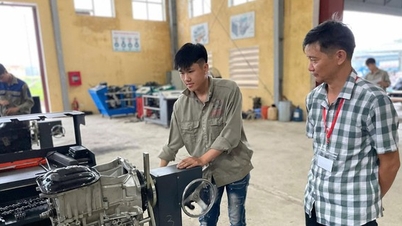



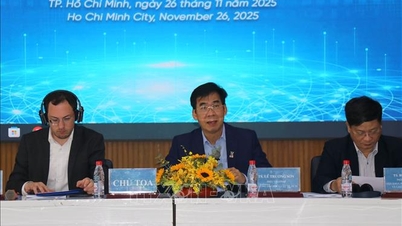

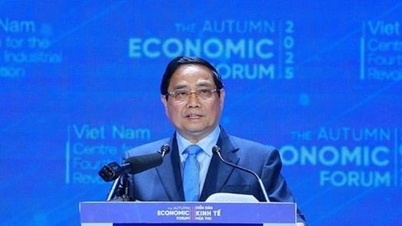



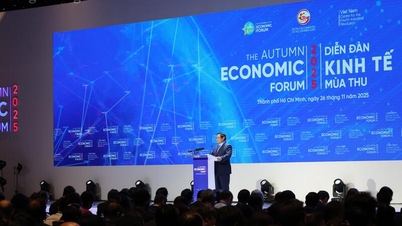







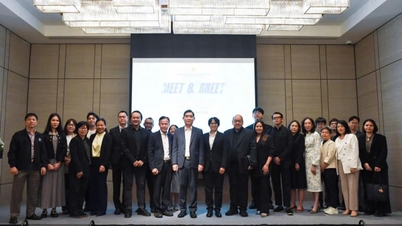

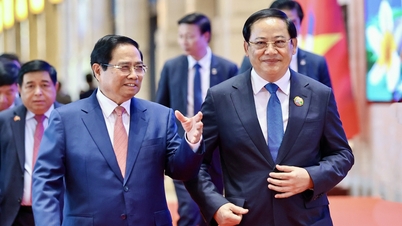




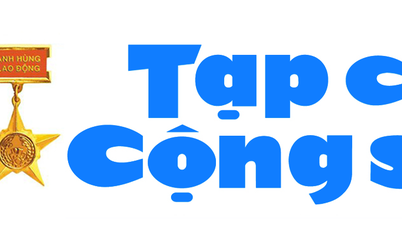








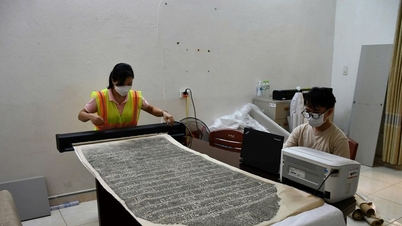




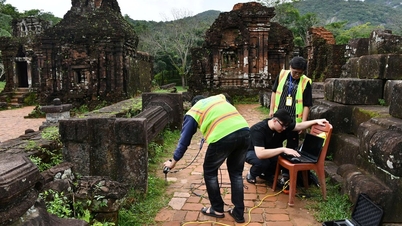




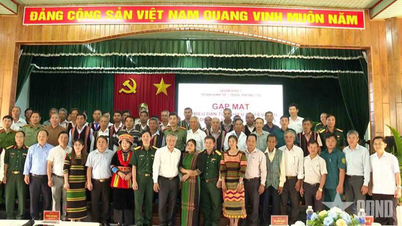








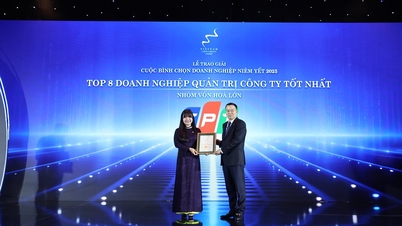


![[VIMC 40 days of lightning speed] Da Nang Port: Unity - Lightning speed - Breakthrough to the finish line](https://vphoto.vietnam.vn/thumb/402x226/vietnam/resource/IMAGE/2025/12/04/1764833540882_cdn_4-12-25.jpeg)
















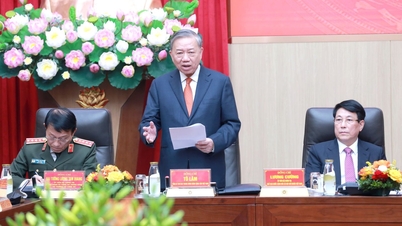

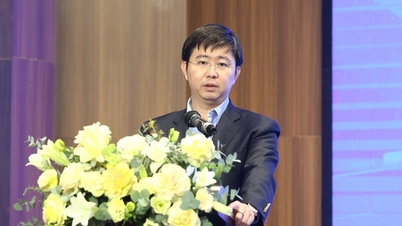













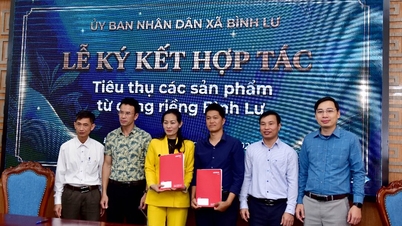














Comment (0)